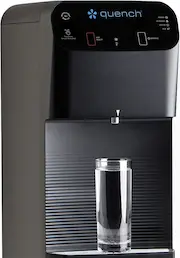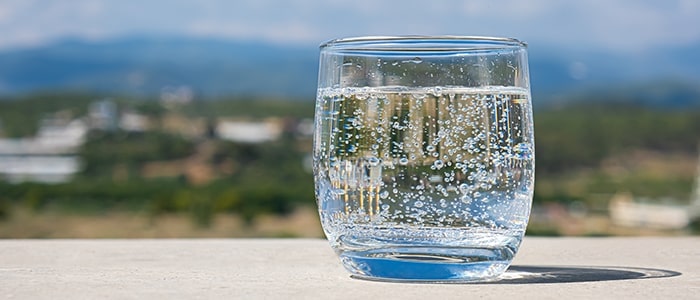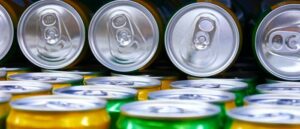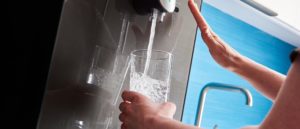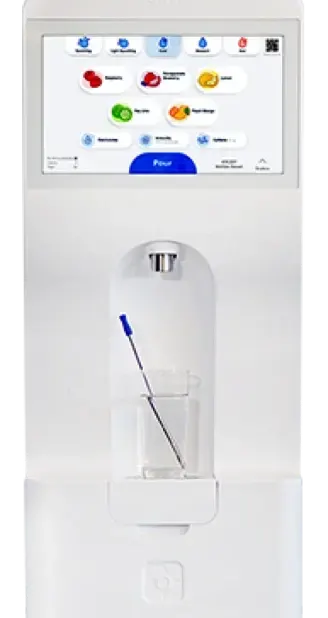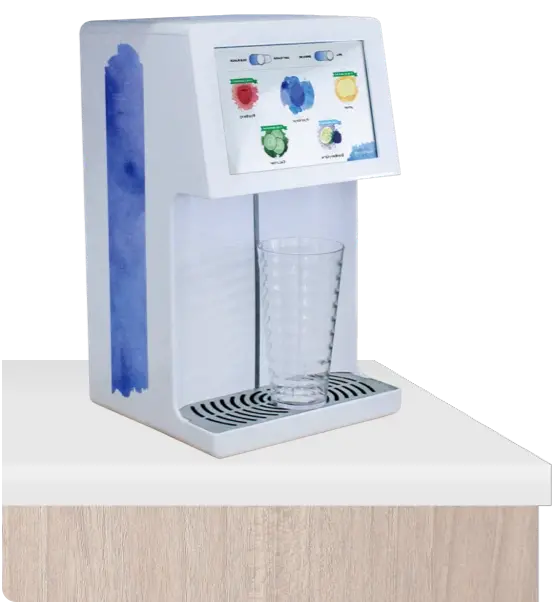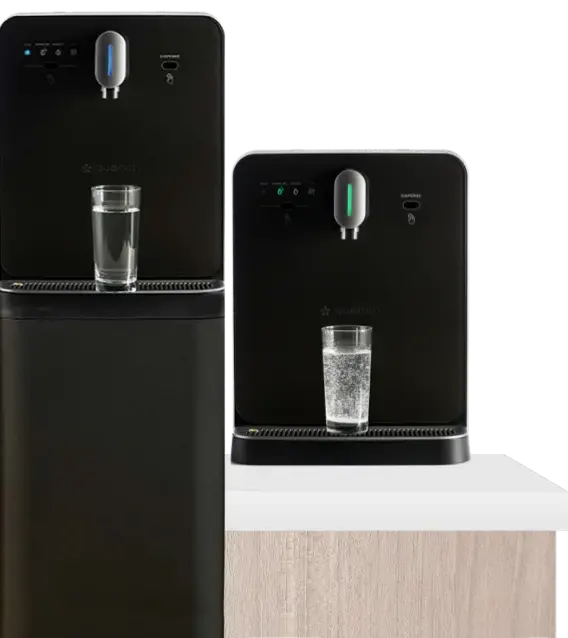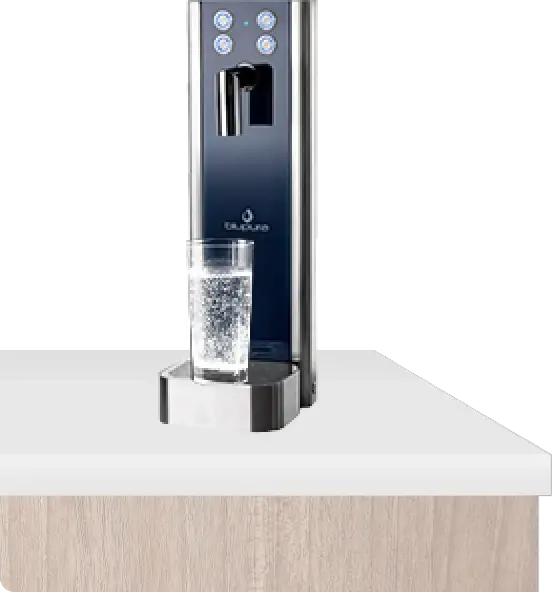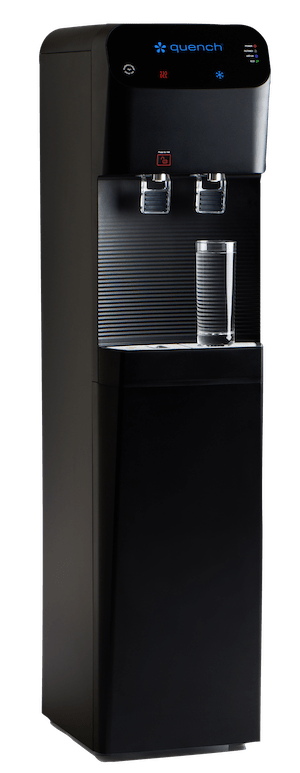As you untwist or pop the lid open of your favorite carbonated beverage, you may revel in the distinct fizzing sound that escapes. But, what exactly causes your drink to have its bubbly texture and taste?
We’re answering this question as we dive into the world of effervescent liquid, looking at the process of preparing it and how workplaces can ensure access to delicious sparkling water on demand. Grab a drink to sip, and let’s get started!
What Is Carbonated Water?
Carbonated water is H2O that has been infused with carbon dioxide gas under pressure. The carbonation is generally kept in the water through a concealed container, like a bottle or can, and will slowly release once the lid has been opened, forming bubbles of carbon dioxide gas.
Carbonated water is also referred to as sparkling water, club soda, soda water, seltzer water, and fizzy water. Whatever name you associate with this bubbly drink, it’s a delicious beverage for people who opt for less traditional hydration methods.
There are several types of carbonated beverages, some more healthy than others. These are some of the most popular:
- Soda
- Water
- Sparkling wine
- Energy drinks
- Juice
If you love sugary soda, then you’re not alone. In fact, Healthy Food America found that pop makes up 65% of total sugary drink sales. If you fall into this category, then carbonated water may be a better choice for your well-being. Not only will it give you the same delicious taste, but it will also help you avoid the common health problems that are attached to soda consumption:
- Digestive problems: Carbonated beverages can lead to bloating, gas, and indigestion, leading to many uncomfortable stomach problems.
- Weight gain: Soda is generally high in calories and unnecessary sugars, which can contribute to obesity. One pop won’t be detrimental to your health, but consistently drinking this type of beverage can eventually cause unhealthy weight gain.
- Dental health: Soda’s high sugar content can cause tooth decay and cavities. The combination of sugar and acid in soda can erode tooth enamel, leading to increased dental issues over time.
- Heart health: Any food or drink that has excessive sugar can contribute to heart disease risk factors, such as high blood pressure, inflammation, and high triglyceride levels.
Carbonated water delivers the fizzy taste that pop drinkers love, without the negative health effects of soda. Increase your energy levels, reduce fatigue and headaches, enhance your focus, and boost productivity without sacrificing flavor with hydrating sparkling water.
The Process Behind the Bubbles
There are many carbonated water types to pick from, giving you the freedom to hydrate how you want. But, the common denominator in each of these beverages is the use of carbon dioxide. So, how exactly are bubbly drinks made? Let’s go through the process step by step.
Step 1: Get Carbon Dioxide
Carbon dioxide is an odorless, colorless gas that exists in abundance in our atmosphere. It can be a solid, liquid, or gas — depending on the usage — and can be used in many chemical processes. To make carbonated water, all you really need is cold water, pressure, and surface contact. The cold water keeps the bubbles from going flat. To infuse the carbon dioxide into the water, you’ll need a CO2 tank with a gas regulator valve set to approximately 20 pound-force per square foot (PSI).
You can also use a CO2 charger that fits onto the bottle you’re making the sparkling water in.
Step 2: Fill the Container
Whatever method you use, determine which container you’ll be making the sparkling water in. Fill it up with cold tap water and screw the lid on tightly. If using a tank, allow the valve to gain enough pressure to create the carbonation. If using a CO2 charger, empty it into the bottle and shake the container to activate the capsule and create pressure.
Step 3: Enjoy
After building pressure with whichever method you feel comfortable using, serve the water immediately or refrigerate without opening the lid. Just note that the carbonation process changes the taste of the water. This is caused by the acid that’s released when the carbon dioxide dissolves into the water, reacting and forming carbonic acid.
While this popular method can be done at home, there’s an easier way to introduce delicious, carbonated water at your workplace. The answer is a sparkling water machine from Quench.
These units are designed to provide your team members with delicious seltzer water that is as clean as it can be. Built with advanced sanitization technology, you can rest assured that each sip will taste great and hydrate your staff with cleaner water than your tap.
Answering Carbonated Water FAQs
Still have some inquiries about how carbonation water works? We’ve got you covered. Here are some frequently asked questions we hear all the time:
Is carbonated water as healthy as regular water?
Drinking carbonated water is just as hydrating as drinking regular water, and it increases the feeling of fullness that you get from tap water, according to Banner Health.
There have been concerns in the past that sparkling water erodes tooth enamel, but this has been proven to not be a major concern. Really, there are no negative health risks associated with it.
Does carbonated water have the same benefits as regular water?
Yes, carbonated water delivers the same positive health benefits as regular water. It helps you feel full for longer after meals, relieves constipation, and improves heart health.
Can you carbonate water at home?
You can carbonate water at home using several different methods: a soda maker, seltzer bottle, or any DIY carbonation system to carbonate your regular water. Just ensure you follow specific directions.
Why do bubbles form in carbonated water?
Because carbonated water has carbon dioxide dissolved into it, when a bottle is opened, the pressure inside decreases. This makes the carbon dioxide turn into gas, resulting in the fizzy bubbles you know and love.
Provide Great-Tasting Sparkling Water at Work With Quench
Quench sparkling bottleless water dispensers make it easy to give your workplace crisp carbonated water at the touch of a button. We have several dispenser styles to fit each office, from our Bevi 2.0 to our Quench 533.
Try our product finder to determine which setup is the best for your company.
